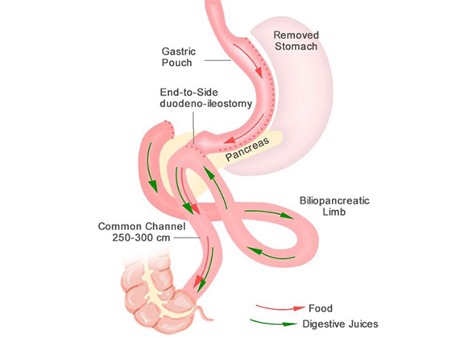The disease of obesity is affecting millions of people worldwide. It is a chronic disease that increases the risk of developing other health problems such as heart disease, diabetes, and cancer. Bariatric surgery is a fantastic treatment option for people struggling with obesity and its psychological and medical consequences.
Sleeve gastrectomy and SADI-S are two commonly performed procedures and Blackrock WeightCare is currently the only surgical service in Ireland to offer patients the SADI-S procedure. In this blog, we explore the advantages of SADI-S over sleeve gastrectomy for patients with a BMI over 50.
Sleeve gastrectomy is a well-established bariatric surgery that involves the removal of a large portion of the stomach, leaving a narrow sleeve of the stomach. This procedure is known to be effective in inducing weight loss by reducing the size of the stomach and altering the hormonal signals that control appetite. However, sleeve gastrectomy is not without its limitations, especially for patients with a BMI over 50.
SADI-S (Single Anastomosis Duodeno-Ileal Bypass with Sleeve Gastrectomy) is a newer and less commonly performed bariatric surgery that combines sleeve gastrectomy with a bypass of the duodenum and the first portion of the small intestine. This procedure is designed to enhance weight loss by reducing the absorption of calories and nutrients. Recent studies have shown that SADI-S may be a more effective option for patients with a BMI over 50.
One of the main advantages of SADI-S over sleeve gastrectomy is its greater weight loss potential. A study conducted in 2018 compared the weight loss outcomes of SADI-S and sleeve gastrectomy in patients with a BMI over 50. The study found that patients who underwent SADI-S lost significantly more weight than those who underwent sleeve gastrectomy, with an average excess weight loss of 88% compared to 65% for sleeve gastrectomy. This greater weight loss can lead to a more significant improvement in obesity-related health problems such as diabetes, high blood pressure, and sleep apnea.
Another advantage of SADI-S is its lower risk of weight regain. Sleeve gastrectomy has been associated with weight regain in some patients due to the stretching of the stomach over time. SADI-S, on the other hand, involves a bypass of the duodenum and the first portion of the small intestine, which reduces the absorption of calories and nutrients. This can make it more difficult for patients to regain weight after surgery.
SADI-S is also associated with a lower risk of dumping syndrome. Dumping syndrome is a common complication of bariatric surgery and conventional roux-en-y gastric bypass surgery. It occurs when food moves too quickly from the stomach to the small intestine, causing nausea, vomiting, diarrhoea and episodes of hypoglycaemia. Patients who undergo SADI-S are less likely to develop dumping syndrome than those who undergo RYGB.
Finally, SADI-S has been shown to be a safe and effective option for patients with a BMI over 50. A study published in 2021 analyzed the outcomes of SADI-S in patients with a BMI over 50 and found that the procedure was safe and effective in inducing weight loss and improving obesity-related health problems.
So, while sleeve gastrectomy is a well-established and also a very effective bariatric operation, SADI-S may have some real benefits for selected patients with a BMI over 50. SADI-S offers greater weight loss potential, a lower risk of weight regain, a low risk of dumping syndrome and has been shown to be a safe and effective option for patients in this BMI range.
Of course, it is essential to note that bariatric surgery is a complex decision that should be made in consultation with a qualified healthcare professional. Contact us for more information.
Blackrock WeightCare. Your health. We Care



